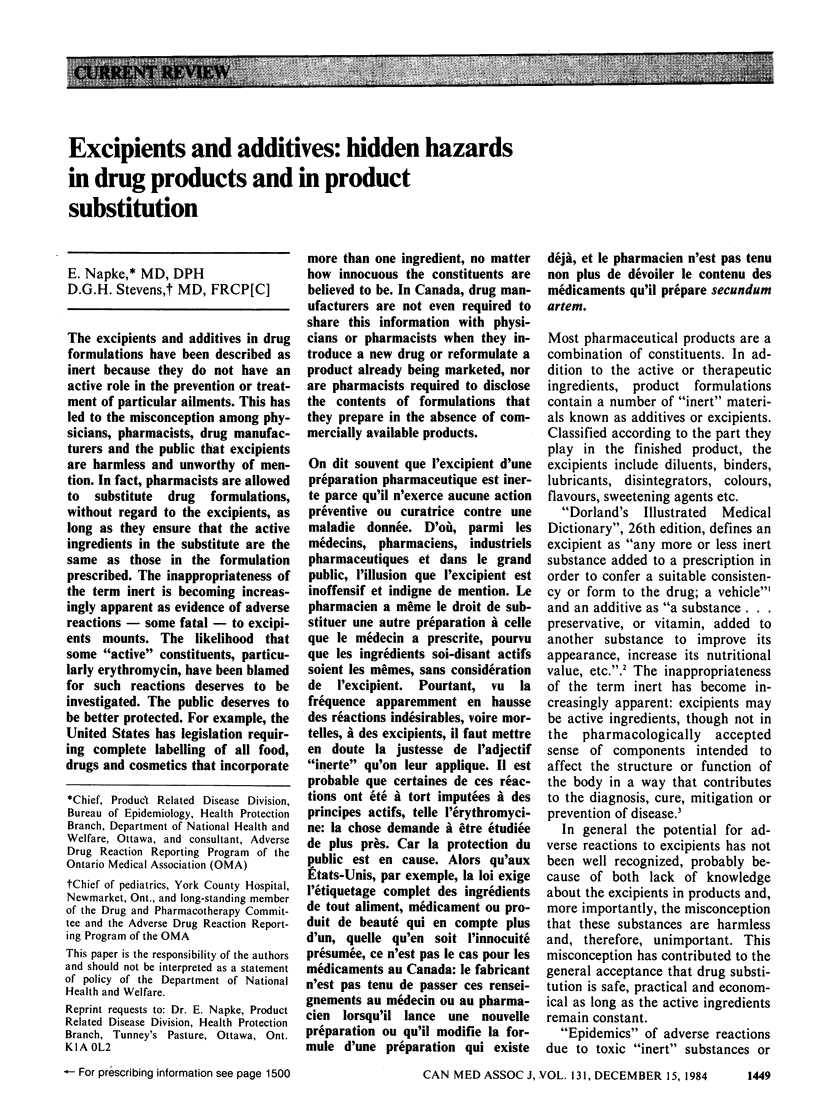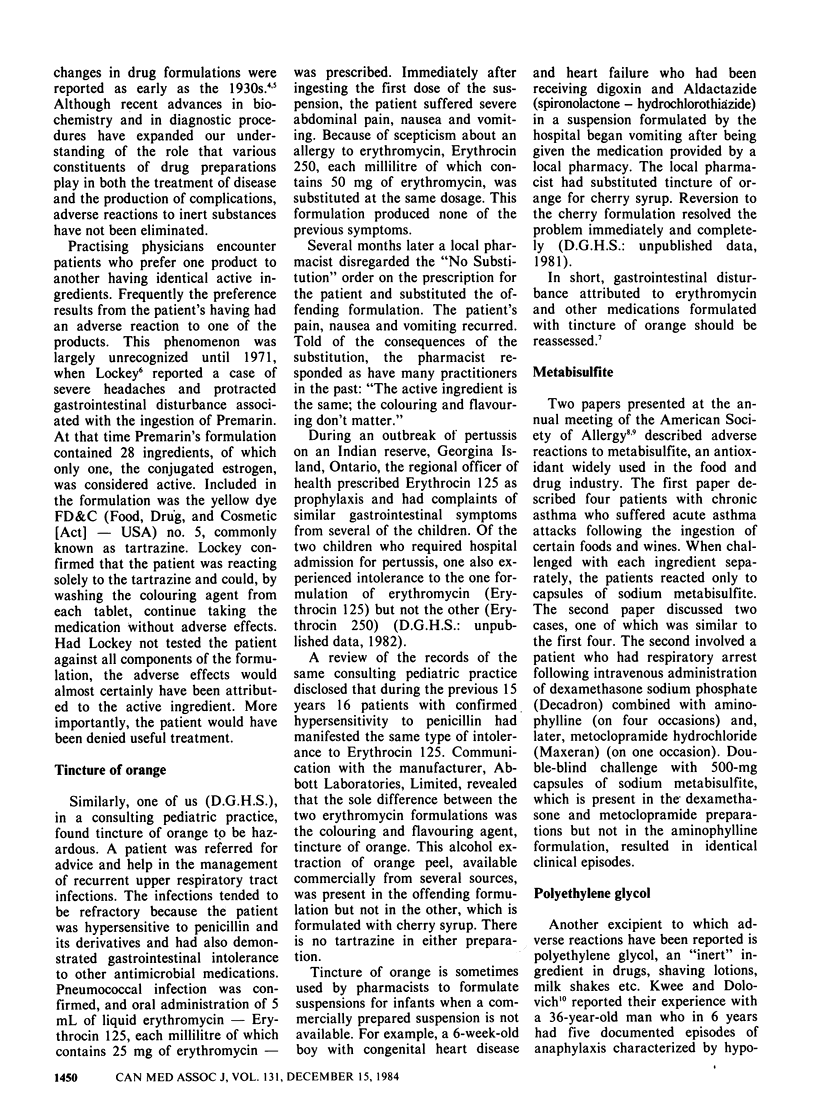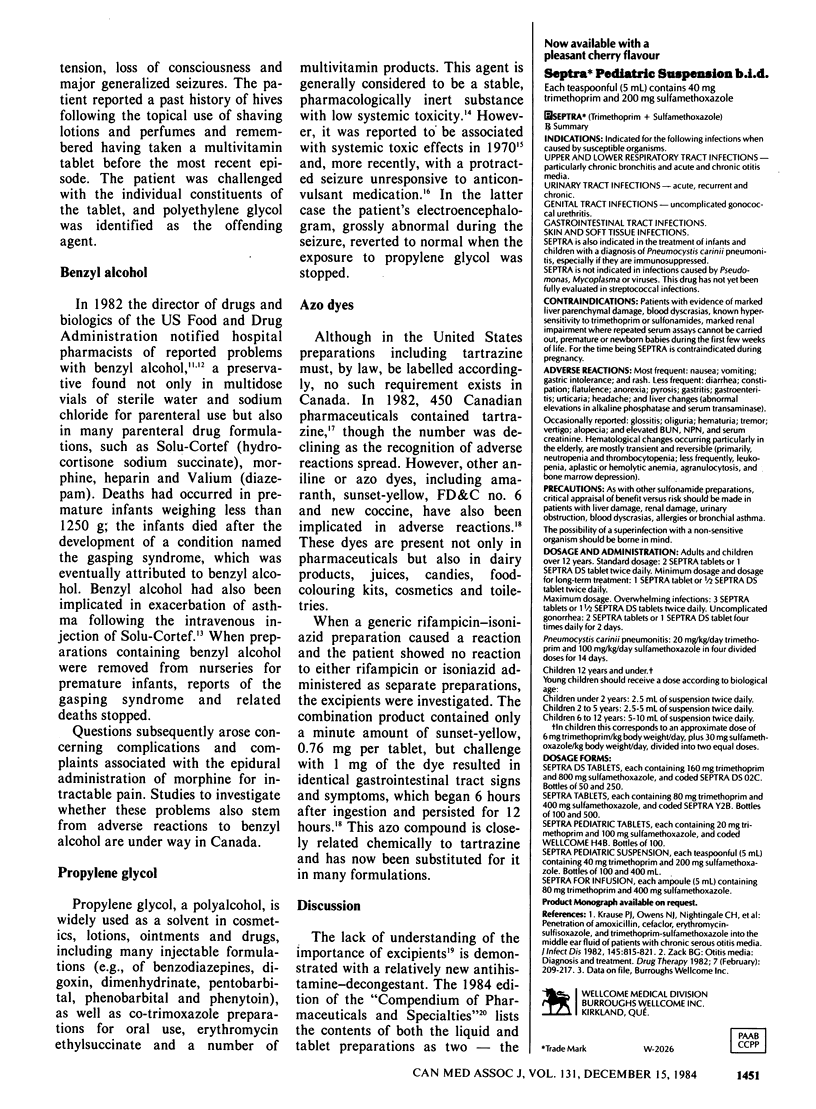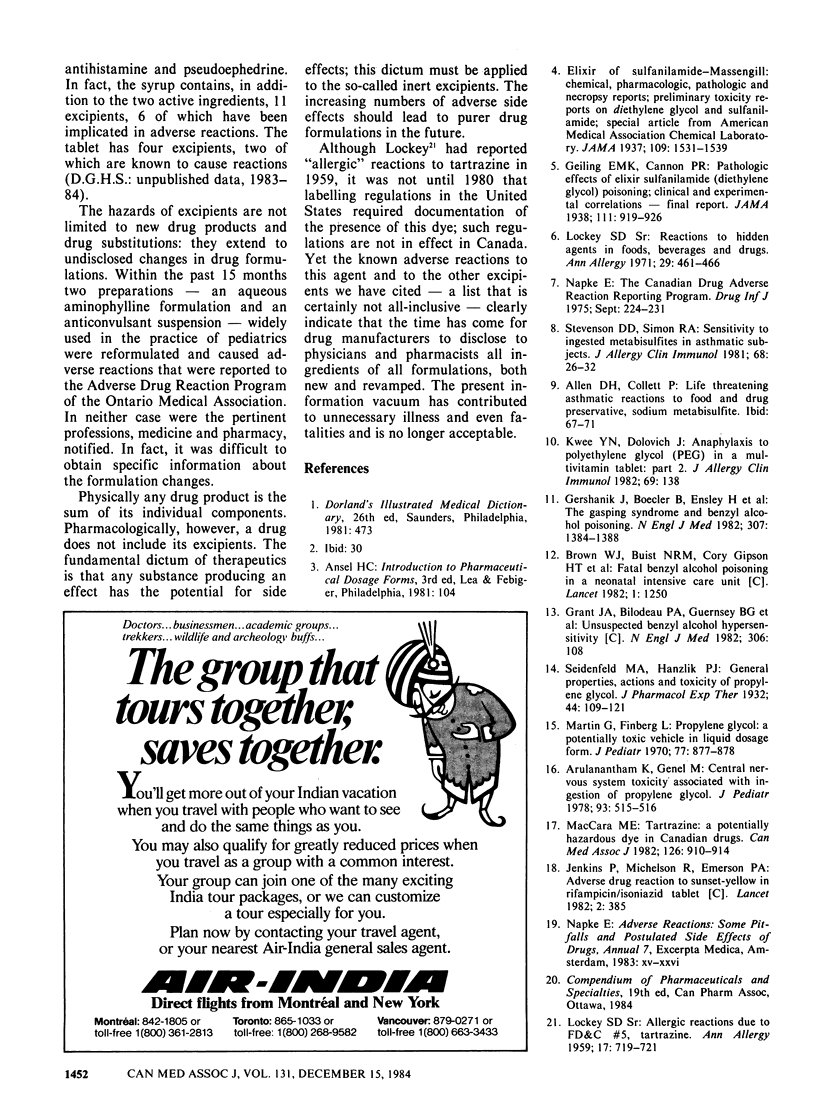Abstract
The excipients and additives in drug formulations have been described as inert because they do not have an active role in the prevention or treatment of particular ailments. This has led to the misconception among physicians, pharmacists, drug manufacturers and the public that excipients are harmless and unworthy of mention. In fact, pharmacists are allowed to substitute drug formulations, without regard to the excipients, as long as they ensure that the active ingredients in the substitute are the same as those in the formulation prescribed. The inappropriateness of the term inert is becoming increasingly apparent as evidence of adverse reactions--some fatal--to excipients mounts. The likelihood that some "active" constituents, particularly erythromycin, have been blamed for such reactions deserves to be investigated. The public deserves to be better protected. For example, the United States has legislation requiring complete labelling of all food, drugs and cosmetics that incorporate more than one ingredient, no matter how innocuous the constituents are believed to be. In Canada, drug manufacturers are not even required to share this information with physicians or pharmacists when they introduce a new drug or reformulate a product already being marketed, nor are pharmacists required to disclose the contents of formulations that they prepare in the absence of commercially available products.
Full text
PDF



Selected References
These references are in PubMed. This may not be the complete list of references from this article.
- Arulanantham K., Genel M. Central nervous system toxicity associated with ingestion of propylene glycol. J Pediatr. 1978 Sep;93(3):515–516. doi: 10.1016/s0022-3476(78)81183-4. [DOI] [PubMed] [Google Scholar]
- Brown W. J., Buist N. R., Gipson H. T., Huston R. K., Kennaway N. G. Fatal benzyl alcohol poisoning in a neonatal intensive care unit. Lancet. 1982 May 29;1(8283):1250–1250. doi: 10.1016/s0140-6736(82)92377-7. [DOI] [PubMed] [Google Scholar]
- Gershanik J., Boecler B., Ensley H., McCloskey S., George W. The gasping syndrome and benzyl alcohol poisoning. N Engl J Med. 1982 Nov 25;307(22):1384–1388. doi: 10.1056/NEJM198211253072206. [DOI] [PubMed] [Google Scholar]
- Grant J. A., Bilodeau P. A., Guernsey B. G., Gardner F. H. Unsuspected benzyl alcohol hypersensitivity. N Engl J Med. 1982 Jan 14;306(2):108–108. doi: 10.1056/NEJM198201143060215. [DOI] [PubMed] [Google Scholar]
- Jenkins P., Michelson R., Emerson P. A. Adverse drug reaction to sunset-yellow in rifampicin-isoniazid tablet. Lancet. 1982 Aug 14;2(8294):385–385. doi: 10.1016/s0140-6736(82)90575-x. [DOI] [PubMed] [Google Scholar]
- LOCKEY S. D. Allergic reactions due to F D and C Yellow No. 5, tartrazine, an aniline dye used as a coloring and identifying agent in various steroids. Ann Allergy. 1959 Sep-Oct;17:719–721. [PubMed] [Google Scholar]
- Lockey S. D., Sr Reactions to hidden agents in foods, beverages and drugs. Ann Allergy. 1971 Sep;29(9):461–466. [PubMed] [Google Scholar]
- MacCara M. E. Tartrazine: a potentially hazardous dye in Canadian drugs. Can Med Assoc J. 1982 Apr 15;126(8):910–914. [PMC free article] [PubMed] [Google Scholar]
- Martin G., Finberg L. Propylene glycol: a potentially toxic vehicle in liquid dosage form. J Pediatr. 1970 Nov;77(5):877–878. doi: 10.1016/s0022-3476(70)80253-0. [DOI] [PubMed] [Google Scholar]
- Napke E. The Canadian drug adverse reaction reporting program. Drug Inf J. 1975 May-Sep;9(2-3):224–232. [PubMed] [Google Scholar]
- Stevenson D. D., Simon R. A. Sensitivity to ingested metabisulfites in asthmatic subjects. J Allergy Clin Immunol. 1981 Jul;68(1):26–32. doi: 10.1016/0091-6749(81)90119-6. [DOI] [PubMed] [Google Scholar]


